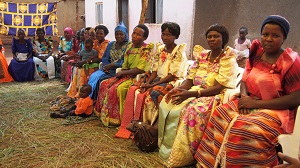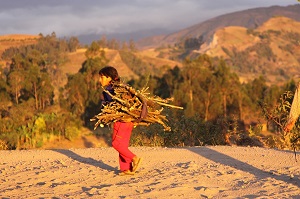Why do we help women?
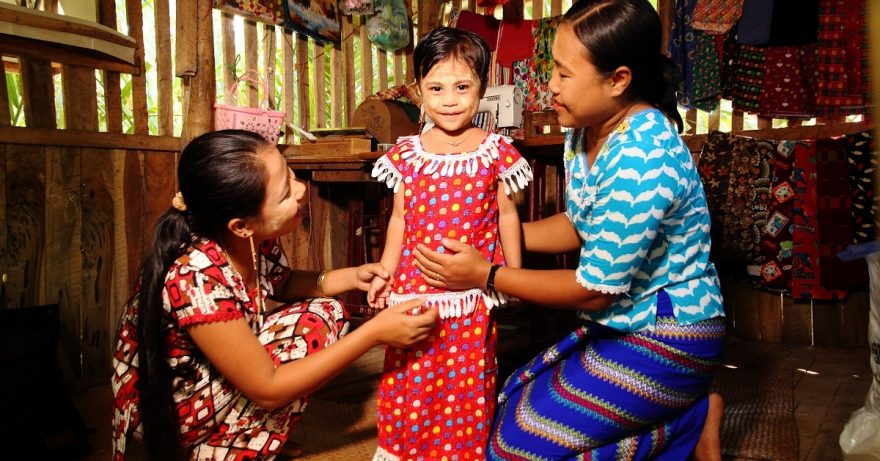
Why do we support women?
Worldwide, women are the poorest: statistics show that 70 percent of the world’s poor are women. Women’s weak economic status makes the actualization of their human rights much more difficult in many ways.
Financial aid or support by itself is not enough, because women’s poverty is rooted to the injustices of the society, which are based on restrictive gender roles. Gender roles play part in unequal attitudes, customs and legislation; they define women’s economic status, livelihood opportunities and what is allowed for women in different times and places. Gender equality and the actualization of women’s rights are prerequisite for development and reduction of poverty. Changing society’s structures does not happen fast, it requires changes in legislation, political action, education in attitudes and education aimed specifically for women.
Women and men, girls and boys have to realize that more equal roles benefit everybody.
Gender roles and livelihood
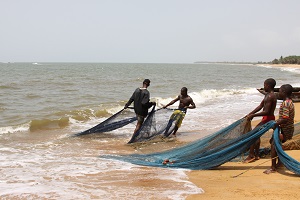
Our notion of what men and women are like and what are their strengths and weaknesses, are based on gender roles. These seemingly natural roles are pretty much based on how the work and chores are traditionally shared between women and men in a society. Work that generates money or other income has traditionally been men’s area. Women have focused in work related to home: taking care of children, sick and the elderly, household chores, and usually also cultivating for domestic use and handicrafts.
Because these jobs are usually unpaid, it has been perceived that men have a stronger say on deciding how to use the household assets. This thinking forgets however that women’s work enables men to work. At the same time it has been forgotten that women do income generating work also. For example, in Narsapur, India, the women have traditionally made skillful laces, but this is not seen as productive work, just a part of their household chores. The men at the same time sell these laces at a local market and are seen as breadwinners.
The division of labor is culturally based. In the area from North Africa, through the Middle East to South Asia, the typical household model is that the man is responsible for the sustenance and safety of the women depended on him. Man’s responsibility also gives him the privilege to decide on the use of household assets. For example, in South Asia, the emblematic purdah-culture ties women tightly to their homes, and makes working outside it impossible. In Sub-Saharan Africa, the Caribbean and parts of the Latin America, the predominant model is that the men and women have their own responsibilities to provide livelihoods. This gives women more opportunities, when it comes to working outside home, mobility and interaction. Quality development c
ooperation work challenges the attitudes that restrict women’s financial rights and aims to strengthen the appreciation of women’s work.
Women’s rights to inheritance and property
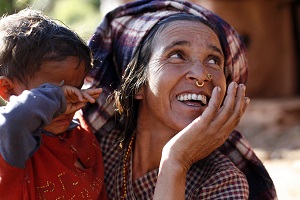
Insufficient inheritance and property rights place women in economically unstable position and affect strongly to women’s poverty. For example, women have less of a chance to get capital for income acquisition, because they do not have the land or other rights demanded for collateral to get a loan.
Property rights have several flaws. Insufficient, women discriminating legislation is general, but even more general is the lackadaisical attitude towards governing the legislation. This is usually connected with ignorance about the existence of the laws and the direction of where to get support or help if the rights have been violated. The prevalent attitudes and customs, which are contradictory to the legislation, are especially slow to change at the local level.
To many living in subsistence economy, the idea of land ownership was foreign. Before the colonial age, a community owned the land, and both men and women had rights to use it. Colonial government brought forth a formal independent ownership that favored men over women. (There were many reasons for this: heritage systems stated that the resources of production were transferred from man to man, colonial masters used men as their prime informants and the European ideals of the time saw men as the heads of households.)
Many African countries still have state legislation, tribal legislation and legislation for different religious groups. Even if the state legislation forbids discrimination based on gender, the tribal or religious legislature concerning family and marriage might be disadvantageous to women. Also, the state law contains several “grey areas”, which are open to different interpretations. Decisions concerning ownership issues are usually made in local courts by those who advantage from old system. In other words, men.
Women’s central ownership and heritage right problems are connected to the traditions that emphasize men’s economic dominance. Most men are perceived as owners of the assets either as owner or as a guardian of woman. In these cases, women have no possibilities to acquire land for their own use. Dowries are perceived as the daughter’s heritage that the spouse’s family receives in marriage. In case of a divorce or a widowhood, even the assets that the wife has brought into the marriage is seen as the husband’s or his family’s property. Polygamy and the related heritage disputes also feed inequality. Development cooperative work cannot overlook these central problems in women’s economic safety. Depending on the situation, we aim to advocate the legislation, develop local advice and support services, or inform the officials and the communities of the existing laws. Without addressing these grievances, even the best project can offer only limited improvement in women’s economic security.
The effects of conflicts in women’s economic security
Conflicts have grave effects on people’s security and wellbeing. Conflicts have divergent problems on both genders. The sexual violence associated with conflicts culminates the power differences between men and women. The weaker economic status of women is connected to the insecurity they feel.
One can look at sexual violence from many different aspects, of which one is economic. Sexual violence can also be seen as a way for men to take women’s contribution and possessions. Women are kidnapped to work for armed forces, but also they are forced to bear children for the enemies, or are prevented from bearing children to their own community. Sexual violence during conflict is a way for landless or otherwise impoverished men to get women’s possessions like land or cattle. For example, during the civil war in Ruanda in 1990’s, there were incidences where a woman was raped, forced to marry her rapist in a fake wedding, and then being repossessed of all her possessions.
Gender also plays a part in economic security in the aftermath of a conflict. Wars break up family structures and other social networks. Women are usually left alone with the burden of household’s sustenance after men have died. After the Ruanda civil war, 60 percent of the population was women, and most of the households were sustained by women or children. These households were in a heightened poverty risk, which was culminated by insufficient heritage rights: according to the Ruandan law, women could not inherit the family’s assets unless otherwise agreed.
The invisible work of women
A large portion of women work at home or outside the formal labor market and often without pay. For this reason, women’s contribution is socially invisible and underappreciated. Despite the fact that women do 66 percent of work worldwide, and produce half of world’s food (in developing countries even 80 percent), women only get 10 percent of the paid salaries and own 2 percent of the land. Because of this, women are not seen as the economic actors that they are. Women subjected to discrimination and prejudices that make it more difficult for them to reach the work market, or the knowledge, capital or technology associated with it. For these reasons, poor families focus on educating their sons, because they see them as providing for them later on.
The poverty and invisibility of women gives them less opportunity to become involved in social decision making. Women also have limited say inside their families and in matters that directly affect their health and wellbeing. They can for example bargain on their own nutritional needs in fear of domestic violence. Women’s weak economic status adds to their feelings of insecurity in a society, and makes them more vulnerable to violence and abuse, especially in unstable conditions and during conflicts.
Supporting women’s opportunities for livelihoods is always connected to equality and human rights. In the past, many development projects have strengthened the unequal gender roles. Men were seen as the recipients of agricultural projects, while women were the targets of nutritional and mother and child health programs. Today, women’s opportunities for livelihoods are supported by small loans. These loans are useless, if they are not connected with entrepreneurship and vocational training. Also, more education on equality for the whole society, including men, is needed.
One of the main objectives of development cooperation is to increase the visibility and respect towards women’s work, expand the economic alternatives made available to women and to increase women’s voice in different levels of society’s decision making progresses.

